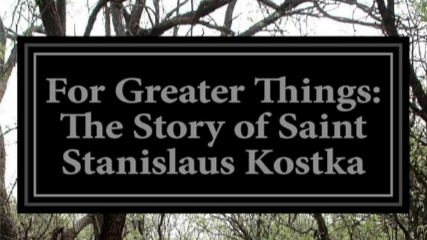Chapter VIII-For Greater Things
byChapter VIII – For Greater Things recounts a period of intense physical suffering and spiritual triumph for Stanislaus Kostka. At sixteen, after nearly two years of emotional neglect and mistreatment in Vienna, his body finally began to break under the constant pressure. A fever in late November 1566 marked the beginning of a serious illness. Though physically weakened, his spirit never wavered. With the feast of Saint Barbara drawing near, Stanislaus focused his prayers on receiving the grace of a happy death and, above all, Holy Communion. In those days, Viaticum was seen as a sacred final rite—a comfort for the dying and a preparation for eternal life. Despite his family’s lukewarm concern and their sudden attempts at compassion, he remained detached, thinking only of uniting his suffering with Christ.
As the illness worsened, Stanislaus encountered an especially disturbing moment—a spiritual battle that few could comprehend. One night, he described seeing a monstrous black dog, whose presence he interpreted as demonic. Yet, instead of cowering, he confronted it through fervent prayer. His courage, drawn from complete trust in God, seemed to banish the darkness. The next morning, his strength had drained further, but his soul remained at peace. The physical toll was apparent, but his determination to receive Communion only grew stronger. Each request was met with refusal, as the Lutheran landlord—strictly anti-Catholic—forbade any Jesuit or priest from entering the house. The risk was high; even his tutors feared retaliation should they go against the landlord’s wishes.
Still, Stanislaus continued to pray. His faith didn’t collapse under the weight of disappointment; instead, it rose like a flame. One night, his prayers were answered in a way that no one around him could have predicted. A radiant light filled the room, and two angels appeared before him, accompanied by Saint Barbara. In their hands, they held the Blessed Sacrament. Stanislaus, overwhelmed with gratitude and awe, received Communion from heavenly messengers, not men. This miraculous moment was both private and transformative, witnessed only by the soul it came to bless. Though the illness persisted, the peace that followed was unmistakable. He had received what he longed for—not through human channels, but by divine grace.
These moments would later be seen as defining signs of his sanctity. Though unknown to the wider world at the time, his room in that house became, for a brief moment, a chapel of heaven. Soon after, he would be visited by another vision—this time of the Virgin Mary and the Infant Jesus, offering consolation and confirming his spiritual destiny. These experiences didn’t remove his physical pain, but they infused it with a holy joy. He bore his condition not as a burden but as a cross willingly carried. He refused to ask for pity or comfort. Instead, he used every breath to pray, every silence to reflect on divine mysteries.
Throughout his illness, his family observed a change they couldn’t fully explain. He grew calmer, more luminous in spirit, even as his health continued to fail. Their earlier hostility faded into confusion and muted respect. While they didn’t yet understand the spiritual depth of the boy they had once dismissed, they no longer mocked his devotion. In Stanislaus, they saw strength that didn’t come from pride, but from peace. Even the tutors, once indifferent, began to soften.
This chapter offers a powerful meditation on what it means to suffer well. Stanislaus did not seek out pain, but when it came, he accepted it as part of a divine plan. His example shows that holiness is not defined by the absence of suffering, but by how one endures it. He did not lose hope when priests were kept from his side. He simply turned to heaven—and heaven answered. The Eucharist, which many receive routinely, became for him a miracle that sealed his connection to the divine. These experiences foreshadowed his future path and served as signs that even in a hostile environment, grace cannot be kept out.
His story in this chapter reflects a deep theological truth: that God’s presence is not confined to churches or ceremonies but breaks through where faith is alive. For Stanislaus, sanctity was born not in ease but in adversity, not in public deeds but in private perseverance. And it was this hidden holiness, illuminated by miraculous signs, that would eventually draw the attention of saints and scholars, confirming that even in silence, greatness grows.

